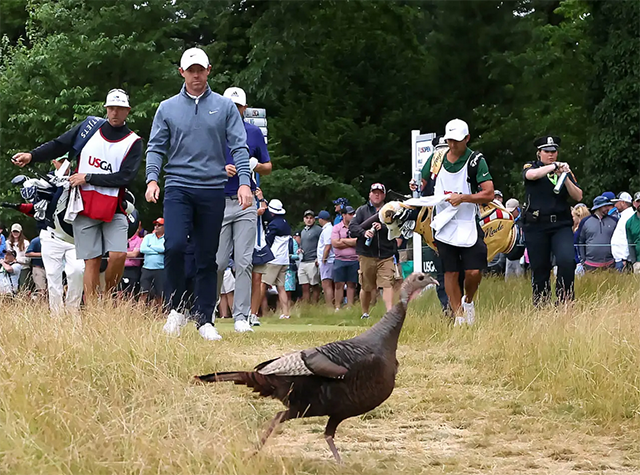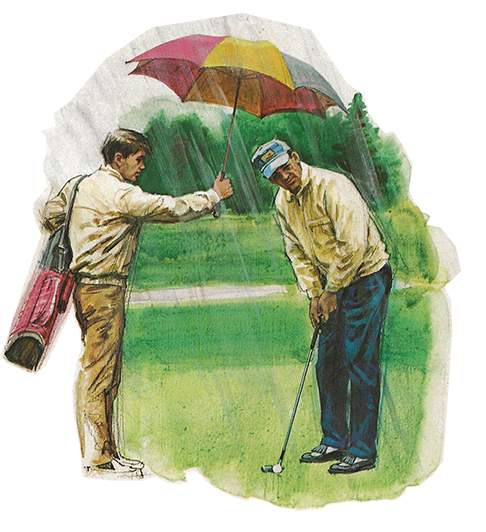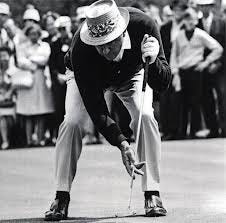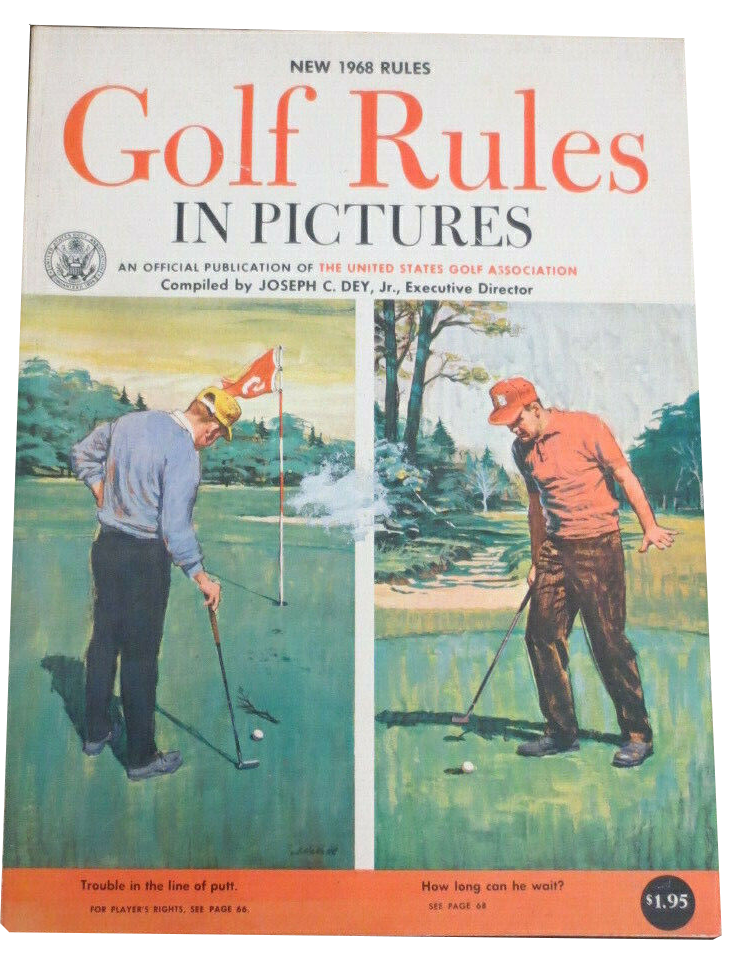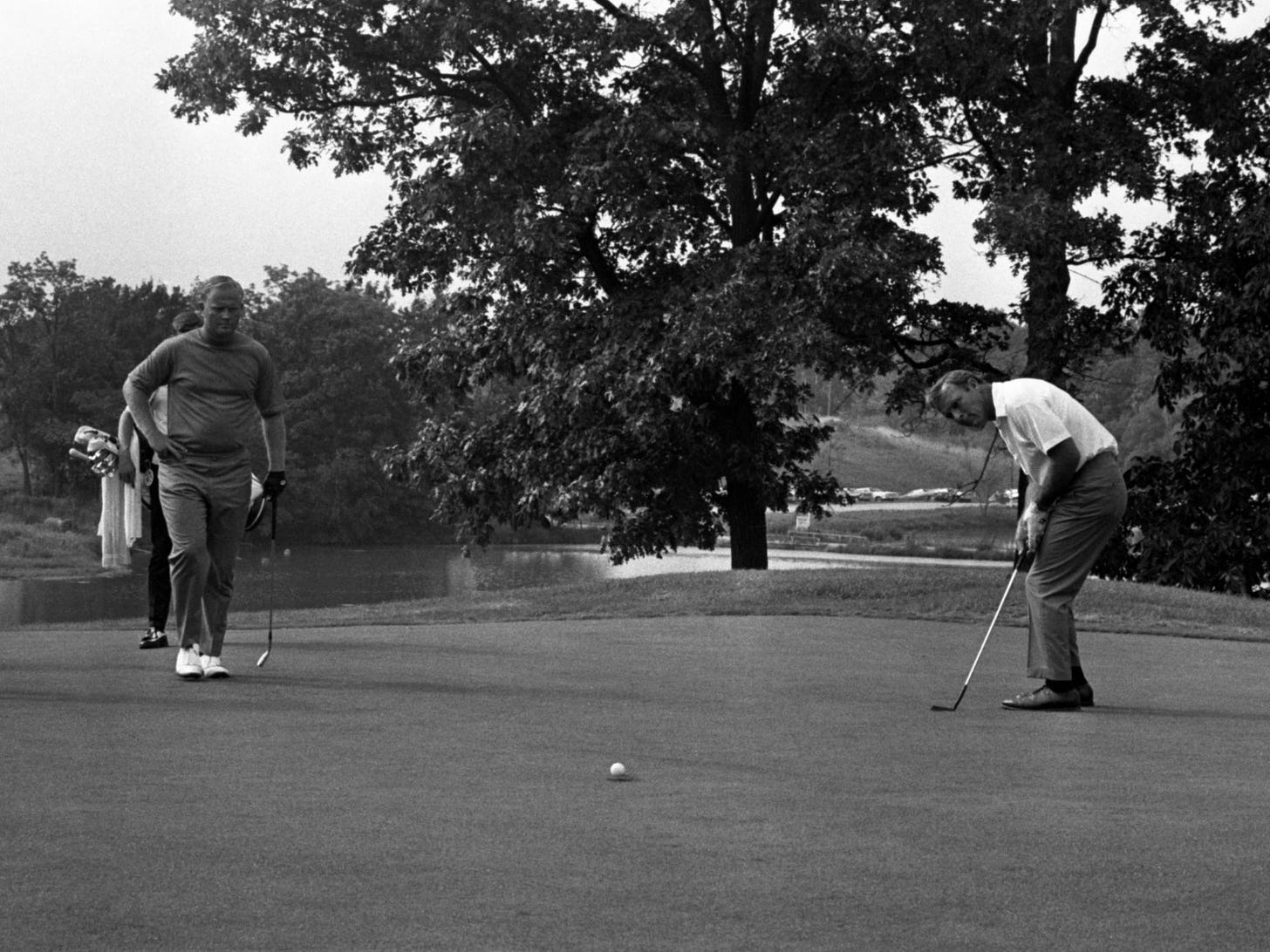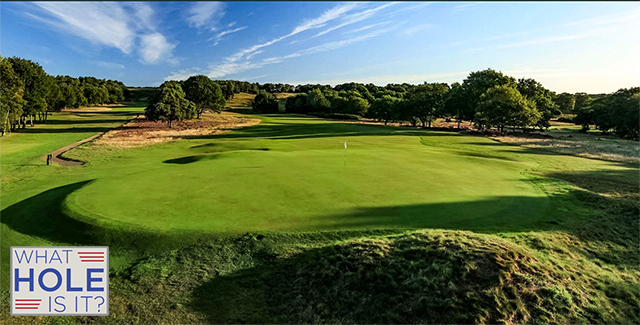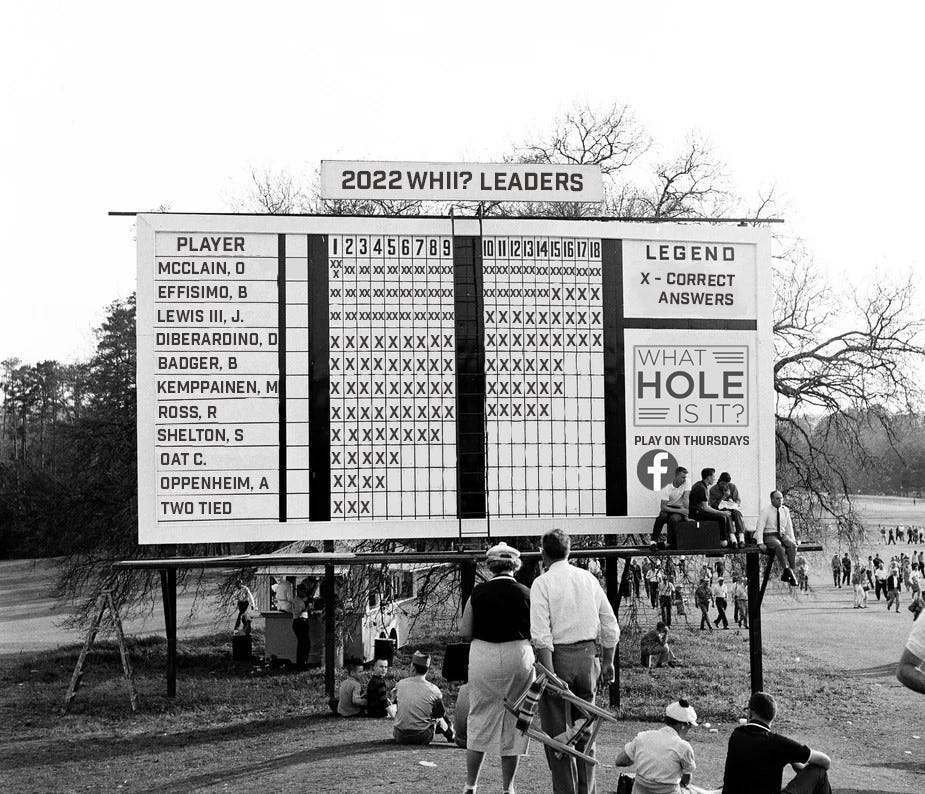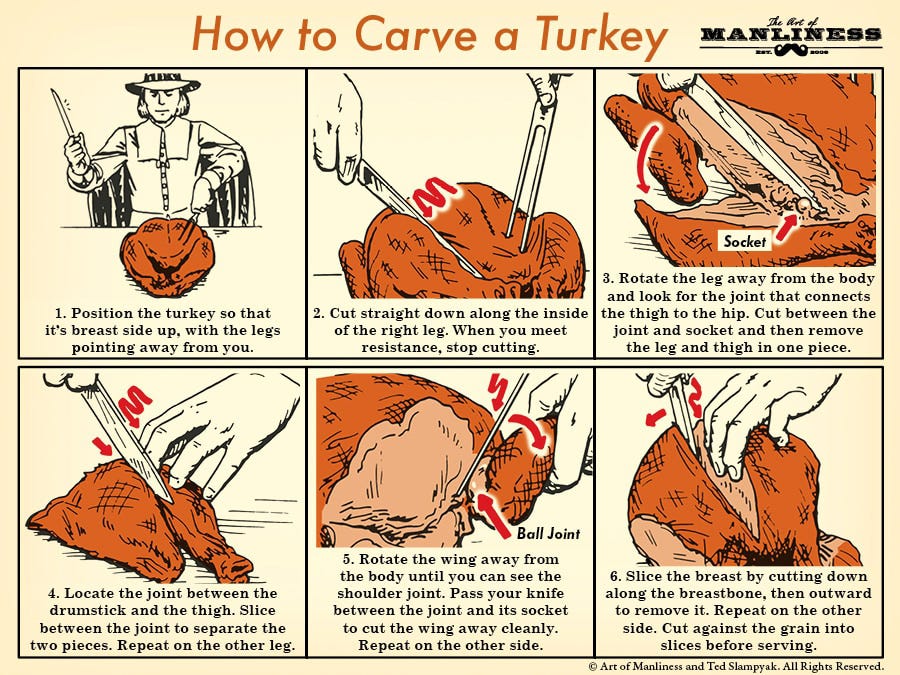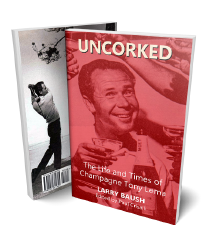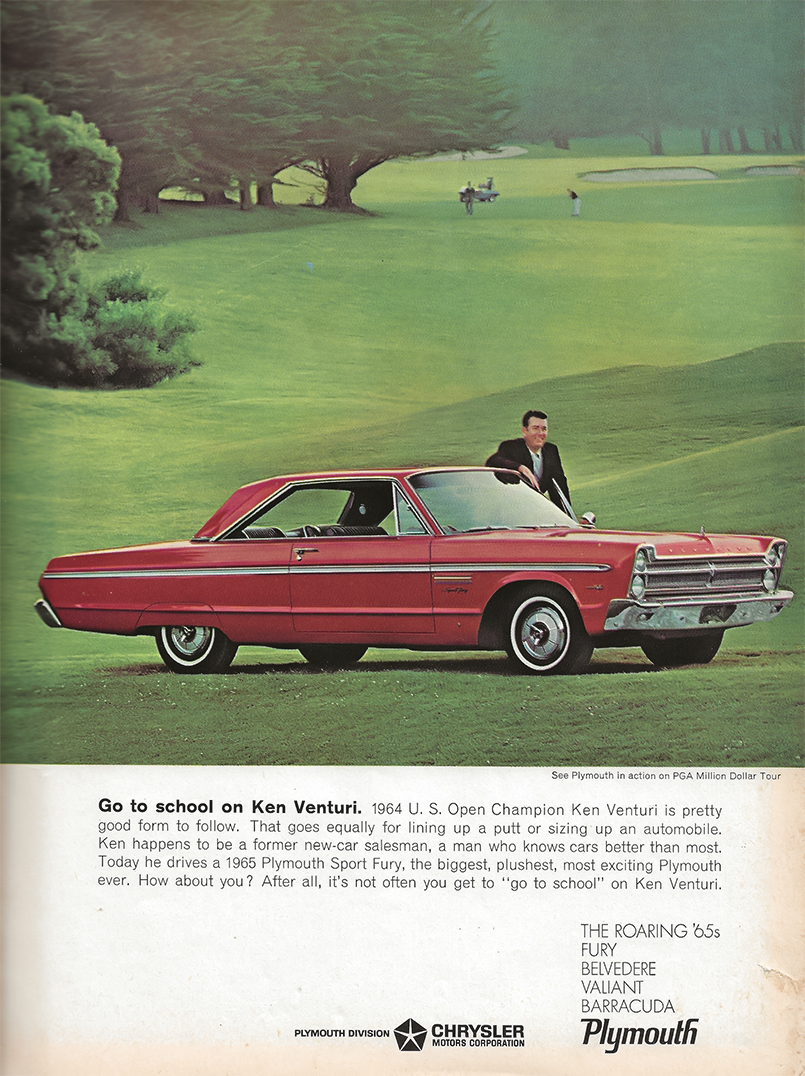Happy Thanksgiving from Tour Backspin! We are so grateful to you, the readers of our little history project. Thank you to all who play WHAT HOLE IS IT? and all those that provide us feedback and tell us their stories. We love the relatives of the pros who played the TOUR during the window we cover who tell us their stories and believe, as we do, that this era, a “golden era”, should never be forgotten. With what is going on in professional golf, history provides a foundation and we love highlighting some of that history.
Congratulations to Adam Svensson on winning the RSM Classic. The PGA TOUR will now be off until Dec. 1st for the Hero World Challenge followed by the QBE Shootout. Then the PGA TOUR will really get started on Jan. 5th with the kickoff of the Sentry Tournament of Champions.
With the PGA TOUR off this week, we’re writing about the changes in the rules of golf that went into effect in 1968. It’s interesting to see rules that were introduced in 1968 that we take for granted, as well as those rules that were quickly discarded.
We love to get feedback! Let us know what you think about Tour Backspin and the stories we tell. Email me at larry@tourbackspin.com.
Listen to The Tour Backspin Show podcast HERE or on Spotify and Apple Podcast.
Congratulations to Bruce Effisimo for correctly answering last week’s WHAT HOLE IS IT? The featured hole was #8 at Mossy Oak Golf Club in West Point, MS. Bruce was the only correct answer. Submit a “Guest Post” picture for WHAT HOLE IS IT? and if we use it, you’ll win a prize and also be credited with a correct score on the leader board. Send your pic to larry@tourbackspin.com. Scroll down for your chance to win in this week’s WHAT HOLE IS IT?
Did you know that Ken Venturi was a car salesman? Scroll down to see this week’s vintage ad to learn more.
We’re playing 1978 PGA TOUR Trivia this week on the Tour Backspin Quiz. Scroll down to play.
Did you miss a previous newsletter? You can view it HERE. Forward this email to a friend. Was this newsletter forwarded to you? You can sign up HERE.
Okay, we're on the tee, let's get going.
Change in the Rules of Golf Unpopular With PGA Pros
It is New Year’s Day in 1968 and the major changes in the Rules of Golf that have been adopted by the USGA and the R&A are going into effect. The ruling bodies go through this exercise every few years, as they have this year with some rule modifications that will go into effect January 1, 2023. A couple of the new rules for 1968 left the pros less than overjoyed.
One rule was adopted because of Sam Snead and his croquet, or straddle style putting. Rule 35 now stated that you may not stand astride the line of putt, or with either foot touching the line of putt behind the ball.
Sam Snead, in the 1966 PGA Championship at Firestone, double hit a two-foot putt. On the very next hole he adopted a croquet style stance with a foot placed on either side of the putting line as he looked directly down the line towards the hole. In 1968 he would have to modify that stance and he came up with his side-saddle stance.
Some of the other new rules included the limit on the value of merchandise prizes for amateurs that had been reduced from $200 to $100. Also new was that adding a foreign material that changes playing characteristics may not be added to the face of the club or the ball (Rule 2). Before 1968 it was legal to hit a “spit ball” that would spin less and travel further.
Rule 35-lh stated that if any ball in stroke play is stopped or deflected on the putting surface by an outside agency (fellow-competitor or his ball, spectator, official) the stroke is cancelled. The ball must be replaced and replayed. Rule 37-9 made artificial devices that might assist a player in making a stroke or in his play were banned.
A golfer [on the green] must play continuously until he holes out, in stroke play, unless his stance would interfere with a fellow-competitor’s line of putt. The ball may be lifted for cleaning only once, before the first putt.
Physical assistance or protection from the elements is prohibited (Rule 9-l0) requiring that caddies holding an umbrella over their player, to protect them from the rain, must step away before the stroke is played (see above illustration).
To speed up play, a new rule was instituted that said a golfer [on the green] must play continuously until he holes out, in stroke play, unless his stance would interfere with a fellow-competitor’s line of putt. The ball may be lifted for cleaning only once, before the first putt. The touring pros hated this new rule.
Rules 35-3c and 41-4 changed the previous rule when it came to a ball from off the putting surface that strikes another ball lying on the green. Previously, this would have warranted a two-stroke penalty, now there would not be a penalty assessed.
The rules also changed how the margins of hazards, out-of-bounds and ground under repair were defined. These margins, or edges, would now be defined as extending vertically upward. A ball on a bridge crossing a hazard would now be deemed to be in the hazard and a ball caught in tree or bush branches that hang over the out-of-bounds would now be considered out-of-bounds.
In this week’s Bonus Story, read how the pros contemplated setting up their own rules when they broke away from the PGA of America. Scroll down to see.
We’ve got a new playlist for you this week. 1968 just had so much good music. Listen HERE.
Please help us grow by forwarding this email to a friend who would enjoy it. Thanks.
Enjoy!
Larry Baush
Follow us on Facebook, Instagram, Twitter and YouTube
Tour Backspin Playlist
Thanks for reading! Please let your family, friends and colleagues know they
can sign up for email delivery of this free newsletter through this link.
Bonus Story
By the end of 1968, the players on the professional tour, that was run by the PGA of America, were ready to break loose from the organization and run the show for themselves. The battle between PGA officials and the players got contentious as the year wore on. (Read about it HERE).
The move was spearheaded by Gardner Dickinson, and he had early support from Jack Nicklaus. Once Arnold Palmer was convinced to join the forces in favor of breaking away, the writing was on the wall. The players quickly set up a tournament schedule for 1969 utilizing many of the same venues and sponsors as the 1968 tournament schedule. The players made plans for a “qualifying school” where players would earn their way onto the tour.
The players also considered writing rules that would bifurcate the golfing world between pros on the tour and amateurs. Eventually, this idea was cast aside. Here’s how Jack Nicklaus explained it many years later in March of 2019 to Dave Shedloski of Golf Digest;
“But we all took the position that we are not bigger than the game and the game of golf is the USGA and the R&A,” Nicklaus explained. “We felt like if we did that, then we’re making ourselves more important than the ruling bodies of the game of golf and we didn’t think it was the right thing to do.”
WHAT HOLE IS IT?
Are you on the leader board?
Tour Backspin Quiz | 1978 PGA TOUR Trivia
Seve Ballesteros won his first PGA TOUR title in 1978. What tournament did he win?
Answers below
Pro Pointer
Blind Shot
Click for something fun. 👀
Tour Backspin Quiz Answer:
Seve Ballesteros captured the 1978 Greater Greensboro Open, his first PGA TOUR title.





